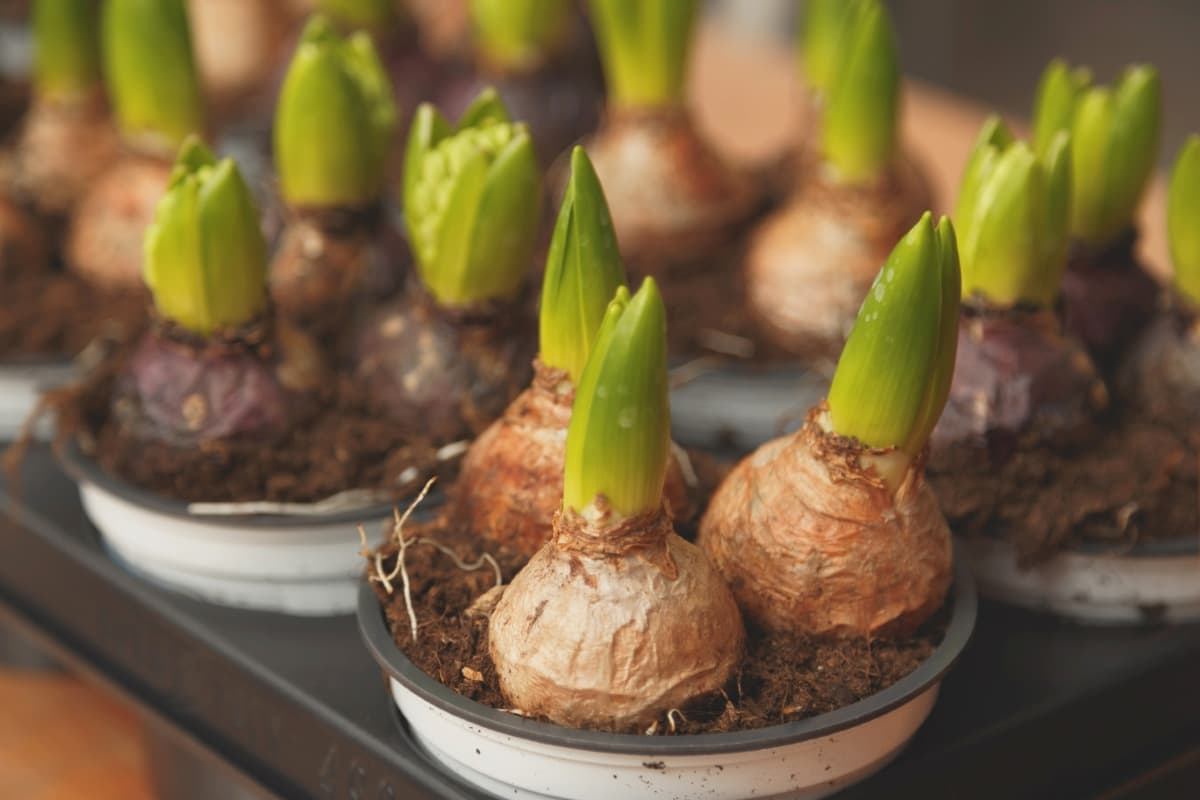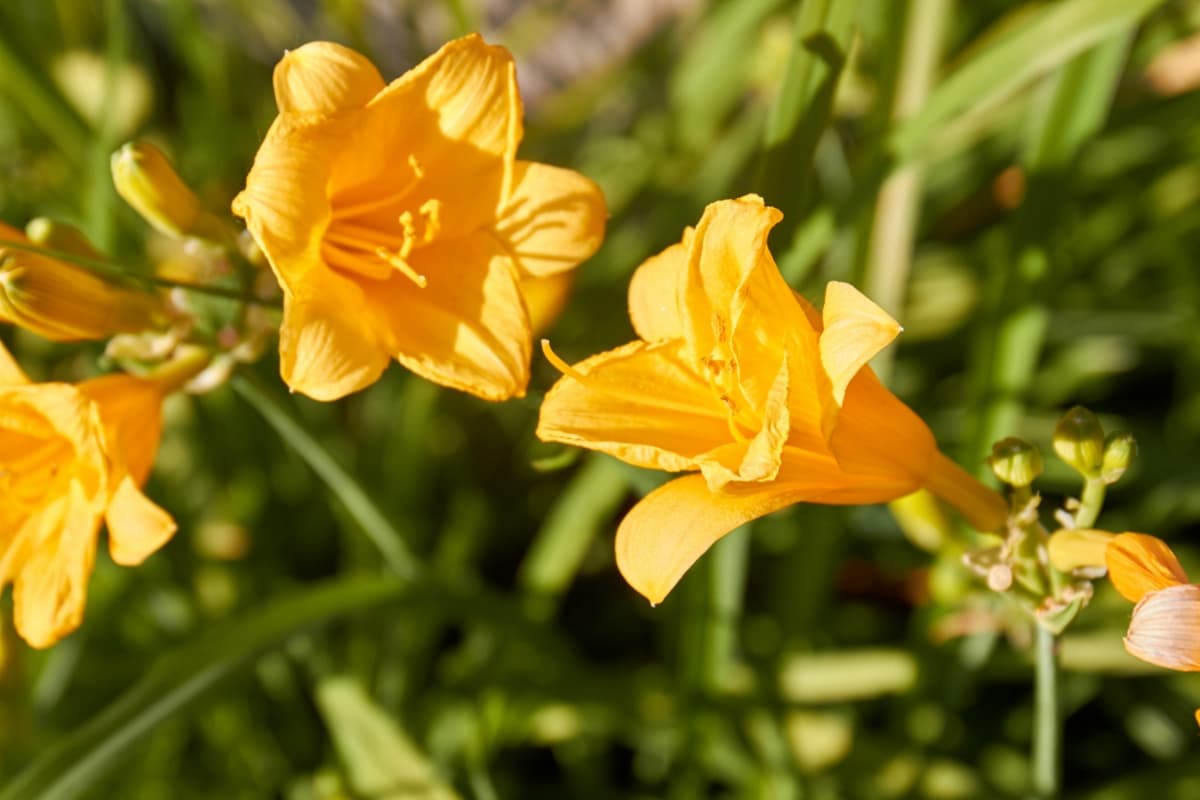Growing Amaryllis is a rewarding and exciting experience that can bring life, color, and beauty to your home. With its striking blooms, different types of varieties, and relatively easy-to-care-for nature, it’s no wonder many gardeners plant these gorgeous flowers year after year. Whether adding them to your indoor space or outdoor garden beds, remember that proper care is key when growing Amaryllis. With just a little attention and effort throughout the blooming cycle, you’ll be rewarded with vibrant colors that will brighten up any room.

The Art of Growing Amaryllis
Step-By-Step Guide to Growing Amaryllis Bulbs Indoors
These stunning flowers can bloom for several weeks or months with proper care. Choose a high-quality bulb that is plump and firm. Look for one with roots already forming at the bottom. Next, select a pot slightly larger than the bulb, with drainage holes in the bottom. Fill the container with potting soil mix. Place the bulb in the pot and gently press it into the soil until its top half remains visible.
Water thoroughly after planting, ensuring excess water drains through those drainage holes. Keep your newly planted Amaryllis in bright but indirect sunlight as it begins growing. You may see new growth emerge from your plant (usually within one or two weeks); start watering regularly but not too frequently; aim for once every 7-10 days, depending on humidity levels around where you live.
How to Plant Amaryllis Bulbs in a Pot/Container
Planting Amaryllis bulbs in a pot or container is easy and enjoyable. To get started, choose a pot at least 6 inches deep with drainage holes to prevent waterlogging. Fill the pot with well-draining soil mix up to two-thirds of its depth. Next, place the bulb on the soil with its flat side facing down and gently press it into the soil until only one-third of it remains above ground level.
In case you missed it: Blooming Harvest: Contract Farming for Greenhouse Vegetables and Flowers

After planting, water the bulb thoroughly but avoid overwatering as this can lead to rotting. Place your potted Amaryllis in a bright spot where it can receive ample sunlight for at least six hours daily. Once your Amaryllis grows, rotate the pot every few days. You may need to use stakes or ties to support taller stems as they grow. Keep your plant moist as it grows by watering once or twice weekly, depending on environmental conditions.
Best Practices for Planting and Caring for Amaryllis Flowers
It’s important to choose the right container or pot for your bulb. Amaryllis bulbs prefer well-draining soil, so make sure the pot has drainage holes. Next, plant your bulb about one-third above the soil’s surface. Water thoroughly after planting, but you should not overwater, which causes root rot.
Once your Amaryllis begins blooming, rotate it regularly so all sides receive equal exposure to sunlight. Amaryllis plants prefer bright but indirect light and temperatures between 15 to 20°C. Regarding fertilization, use a balanced fertilizer once every two weeks during active growth periods and reduce frequency during dormant periods (fall/winter). Pruning is an essential part of Amaryllis care. Remove spent blooms by cutting them off near their base with sharp scissors or pruners. Doing so will encourage new blooms and keep your plant looking tidy.
Seasonal Amaryllis Care: Winter Storage and Spring Rejuvenation
As winter approaches, it’s important to consider how you will care for your Amaryllis bulbs during the colder months. This seasonal care ensures your plants remain healthy and vibrant throughout the year. During winter storage, keeping your Amaryllis bulbs in a cool, dry place where they’ll be safe from frost and excess moisture is best.
Many gardeners store their bulbs in a paper bag or mesh container until spring arrives. When replanting your Amaryllis bulb, make sure that at least one-third of the bulb remains above ground level. This will help prevent rotting and ensure proper growth.
Choosing the Right Soil Mix for Thriving Amaryllis Plants
Choosing the right soil mix is crucial for healthy and thriving Amaryllis plants. A well-draining potting mix that retains moisture is essential to avoid root rot and fungal diseases. You may opt for a pre-made commercial potting mix. Adding some sand or coarse grit can improve drainage further. You can use a mixture of compost, garden soil, and sand in equal proportions.
However, this soil type tends to be heavier and more prone to retaining water, so ensure it drains well before planting your bulbs. It’s crucial not to use heavy soils like clay or topsoil as they don’t drain well enough for Amaryllis plants’ needs. Also, avoid using garden soil alone as it contains pathogens that can harm the plant roots. Before planting the bulbs in their pots, fill the containers with 2 inches of dampened potting mix at the bottom. Place each bulb on top of the mixture with its flat side facing down-never bury them too deep.
Expert Tips for Successful Amaryllis Gardening at Home
Growing Amaryllis at home can be a delightful and rewarding experience, provided you follow some expert tips that guarantee successful gardening. Choosing large bulbs is important as they produce more flowers than smaller ones. Secondly, select a pot/container that is 1-2 inches larger in diameter than the bulb with drainage holes.
When planting the bulb, leave one-third of it exposed above the soil level. Use a well-draining soil mix for better growth and avoid overwatering, which may lead to root rot. Place your Amaryllis plant near bright light but not directly under sunlight or heat sources like radiators. It’s also advisable to rotate the plant every few days so that all sides receive equal light exposure.
While watering your Amaryllis plant, ensure you don’t water frequently but only when the topsoil feels dry when touched. To promote healthy flowering and strong stems, fertilize your Amaryllis plants throughout their growing season using organic or synthetic fertilizer every two weeks until blooming finishes. After flowering, cut off dead flower stalks leaving foliage intact for photosynthesis until it dies back naturally before winter storage.
Amaryllis Care: Watering, Light, and Temperature Requirements
Watering your Amaryllis plants correctly is essential for their growth and health. These plants need bright indirect sunlight to grow properly, but direct sun exposure may scorch their leaves. If you notice your Amaryllis leaning towards one side, rotate it regularly so all sides receive equal light. Temperature also affects the growth and blooming of Amaryllis plants. Avoid exposing your plant to extreme fluctuations in temperature, as this can shock its system.
How to Propagate Amaryllis: Easy Techniques for Multiplying Bulbs
The easiest propagation method involves dividing the existing bulbs, but you can also try other techniques. To divide a bulb, wait until after it has bloomed and the foliage has died back. Carefully remove the bulb from its pot and gently separate any offsets (smaller bulbs) formed around the main bulb. Each offset should have its roots and at least one leaf bud.
In case you missed it: The Best Fertilizer for Potted Flower Plants: When and How to Apply

Another technique you can use to propagate Amaryllis is called scaling. This involves removing small scales from the mother bulb with a clean knife or razor blade, then placing them in a sterile growing medium until they sprout new growth. You can also propagate Amaryllis by seed if you’re feeling adventurous. Collect seeds from mature flowers once they’ve faded, then plant them in trays filled with well-draining soil mix.
Troubleshooting Common Amaryllis Growing Problems
Despite being relatively easy to care for, Amaryllis plants sometimes experience common growing problems. If you notice yellow leaves or mushy roots, it is the best time to repot your Amaryllis into fresh soil and adjust your watering habits. Another issue that Amaryllis growers face is pests such as spider mites and aphids.
These tiny insects can quickly damage your plant by sucking sap from the leaves and flowers. Try using a neem oil spray or insecticidal soap to combat these pests. If your Amaryllis isn’t flowering properly, it could be due to insufficient light exposure or improper temperature conditions.
Amaryllis plants need bright but indirect sunlight for at least 6-8 hours per day and temperatures between 15°C-24°C. Some growers report issues with their Amaryllis bulbs failing to produce blooms altogether. This could be caused by planting too deeply in the soil or not allowing enough dormancy period after the blooming season ends. Adjust planting depth accordingly and provide a resting period with less water until new growth appears.
Enhancing Amaryllis Blooms: Nutrients and Fertilization Tips
One essential nutrient for Amaryllis plants is phosphorus. It promotes healthy roots and strong flowering stems. When planting your bulbs, you can add a slow-release fertilizer high in phosphorus or use a liquid fertilizer during the growing season. Another important nutrient is potassium which helps improve flower quality by enhancing color intensity and increasing bloom size. A balanced fertilizer can be applied every two weeks during active growth periods.
It’s also crucial not to over-fertilize your Amaryllis, as this can lead to burnt foliage or damage to the roots. Use a half-strength solution when applying liquid fertilizers and limit solid slow-release options per package instructions. In addition to feeding your plant properly, it’s vital always to keep an eye on water levels; too much water could lead to leaves yellowing, while underwatering would negatively affect the bud’s development.
Conclusion
Growing Amaryllis is an enjoyable and rewarding experience that can be done right at home. With the proper care, these stunning flowers will bloom beautifully year after year. Remember to choose a good soil mix, provide adequate watering, light, and temperature requirements, and provide nutrients when necessary for enhanced growth and blooms. Growing Amaryllis is a rewarding experience that can add beauty to any indoor space. With the right planting techniques, proper care, and expert tips for growth, you can enjoy these stunning blooms year after year.
- Feed Your Flock for Less: Top 10 Tips to Save on Chicken Feed
- Ultimate Guide to Ossabaw Island Hog: Breeding, Raising, Diet, and Care
- Hatching Answers: The Top 10 Reasons Your Chickens Aren’t Laying Eggs
- Eggs and Economics: Breaking Down the Cost of Raising Backyard Chickens
- Defend Your Greens: Proven Methods to Keep Iguanas Out of Your Garden
- Ultimate Guide to Cinnamon Queen Chicken: A Comprehensive Guide for Beginners
- Ultimate Guide to California Tan Chicken: Breeding, Raising, Diet, Egg-Production and Care
- Ultimate Guide to Marsh Daisy Chicken: Breeding, Raising, Diet, and Care
- 10 Types of Chicken Farming Businesses You Can Start for Profits